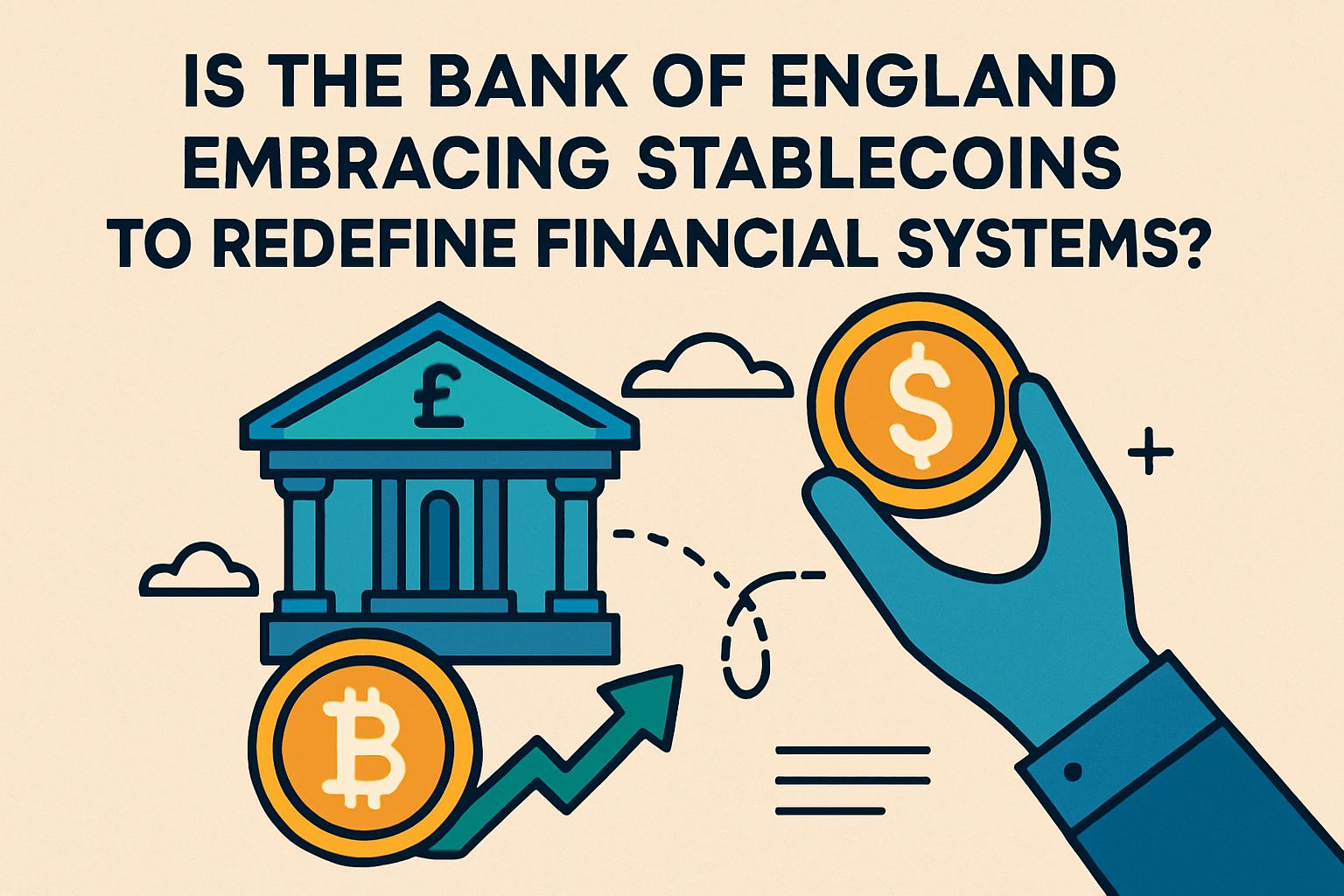The financial world stands at a fascinating juncture. As cryptocurrencies continue to carve out a bigger role in global finance, traditional institutions such as central banks are beginning to explore their potential. Recently, the Bank of England (BoE) governor, Andrew Bailey, made a surprising pivot in this narrative. His acknowledgment of stablecoins as a potent force for change and a possible solution to long-standing issues in the banking sector marks a noteworthy departure from the status quo.
A Rethink on Traditional Banking Models
In the past, banks operated under a fractional reserve system, where the money supply was tightly linked with credit through commercial banks. This means that banks only held a fraction of their depositors’ cash in reserve, loaning out the remainder. However, Bailey proposed separating money deposits from credit generation, potentially decreasing the banking system’s reliance on commercial banks and reshaping the way we think about money.
“The money created by commercial banks is often risky, as it largely comprises loans to individuals or businesses,” Bailey reflected. This current model could potentially be supplanted by a system where stablecoins play a more central role alongside traditional banks, dispersing the responsibility and risk of lending across a broader financial landscape.
Industry Opposition and Central Bank Adjustments
This realignment of perspectives coincides with pushback from the UK’s crypto industry regarding a proposed cap on stablecoin holdings. Detractors argue that such restrictions would hinder cost efficiency and competitiveness in the global market. Prominent voices in the industry claim no other jurisdiction has suggested similar limits, highlighting the potential dissonance between regulatory measures and market dynamics.
Bailey’s stance suggests a regulatory focus shift toward large-scale applications of payment and settlement technologies. Current cryptocurrencies, including stablecoins, have yet to meet these rigorous standards. However, Bailey’s evolving viewpoint might signal the BoE’s readiness to embrace innovation under controlled conditions.
Stablecoins: A Pathway to Enhanced Financial Infrastructure?
Moreover, Bailey emphasized the potential integration of stablecoins into central bank accounts. This move, he suggests, could bolster the currency’s status as a “synthetic central bank digital currency (CBDC),” depending on the portion of reserves held and the accruement of interest. This approach aligns stablecoin functionality with regulated financial practices, potentially simplifying transactions and reducing systemic risks.
Columbia Business School’s Omid Malekan views this strategy as transformative, potentially disrupting commercial banking and shaking the industry to its core. By positioning stablecoins as viable contenders within the financial system, Bailey foreshadows the possibilities of reshaping credit sources and financial security.
An Open Door for Innovation and Security
Despite this positive pivot, Bailey insists on safeguards. He underscores the need for stablecoins to be backed by risk-free assets, insured against operational risks like cyber threats, and governed by consistent trading protocols. Bailey’s openness to upcoming currency innovations highlights his balanced approach, striving for a secure and transparent financial future.
Ultimately, as the BoE recalibrates its stance, the evolution of digital currencies like stablecoins might usher in an era of unprecedented flexibility and reduced dependence on traditional banking. This vision of a hybrid financial system, composed of both conventional and digital elements, opens new pathways for global transactions and economic security.

![[News] Bitcoin at a Turning Point? 10x Research Signals a Bullish Macro Shift Ahead](https://cryptoexplores.com/wp-content/uploads/2025/06/new20250616.jpg)
![[News] Binance Lists $HOME, the Gas-Free, Bridge-Free All-in-One DeFi App](https://cryptoexplores.com/wp-content/uploads/2025/06/news20250617.jpg)